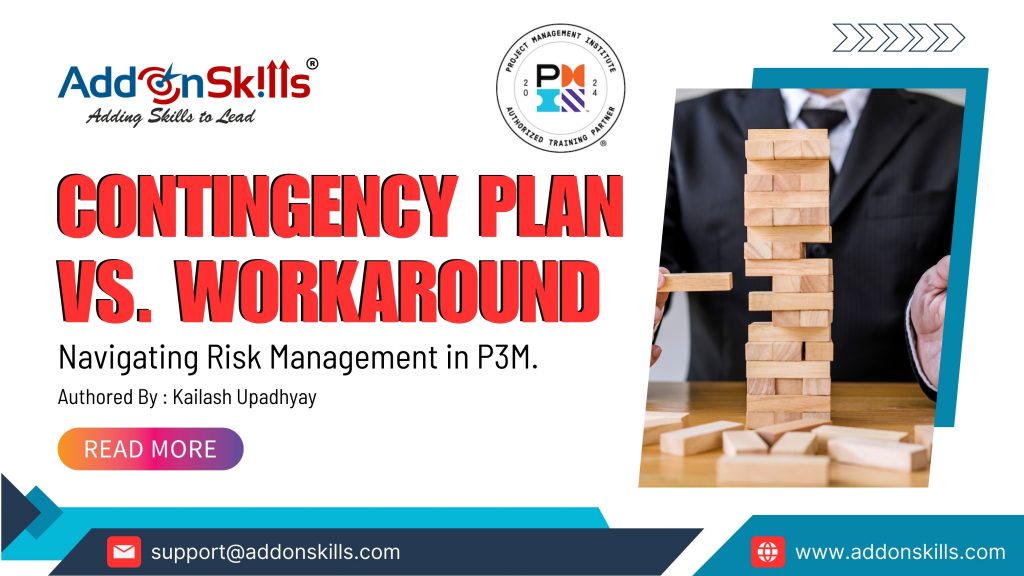Introduction:
If you’re managing projects, programs, or portfolios, you’ve probably heard the terms "Contingency Plan" and "Workaround" thrown around quite a bit. But what do they really mean? And how do you know when to use one over the other? Understanding the difference is key to keeping your projects on track, even when things don’t go as planned.
Let’s dive into these two important risk management approaches.
What is a Contingency Plan?
- Proactive by Nature: Developed during the planning phase of a project, contingency plans are designed to be proactive, meaning they are established before any risks materialize. These plans provide a structured response to potential risks, allowing project managers to prepare in advance. However, the execution of the plan only occurs if and when the identified risk actually materializes. For instance, if there is a known risk of supply chain delays, a contingency plan might involve securing an alternative supplier well in advance to mitigate the impact of any delays.
- Time and Resources: Contingency plans benefit from the luxury of time. Since they are developed during the planning stages, they are typically well-documented, with allocated resources, timelines, and budget considerations. This preparation allows for a smoother execution when the plan is needed.
Workaround: Reactive Problem Solving
- Reactive by Nature: Workarounds are your immediate responses to unexpected problems that weren’t anticipated during the planning phase. Unlike contingency plans, which are thought out in advance, workarounds are developed on the fly when an unforeseen issue arises. They require quick thinking and flexibility to address problems that could otherwise derail your project. These solutions are crucial for keeping things on track when something unexpected happens, but they’re often created under pressure and without the benefit of detailed planning.
- No Time for Formal Planning: Since workarounds are not planned in advance, they may not be as well-structured or detailed as contingency plans. They often rely on the project team's ability to think on their feet and find creative solutions in real-time.
So, What’s the Difference?
Here’s a simple way to remember it:
- Contingency Plan = Plan B: Made in advance, ready to go if a known risk becomes a reality.
- Workaround = On-the-Fly Fix: Created on the spot to handle unexpected problems that weren’t on your radar.
Conclusion:
In the world of project, program, and portfolio management, both contingency plans and workarounds are essential. Contingency plans give you peace of mind knowing you’re prepared for what might happen, while workarounds keep you agile and ready to handle surprises. By mastering both, you’ll be better equipped to navigate the twists and turns of any project, ensuring you can steer it toward success no matter what challenges arise.
Let’s Keep the Conversation Going:
Have you ever had to use a workaround in a critical situation? Or maybe you’ve seen a well-prepared contingency plan save the day? Share your experiences with our global P3M community, and let’s learn from each other. Together, we can all become better at managing risks and driving successful outcomes in our projects, programs, and portfolios.
That's all in this article. Once again, thank you for being part of this weekly newsletter series. I kindly ask for your continued support. Liking, sharing, and subscribing to this newsletter series is a simple yet powerful ways to show your appreciation. By doing so, you not only help me reach a wider audience but also contribute to building a thriving community of knowledge seekers and enthusiasts.
